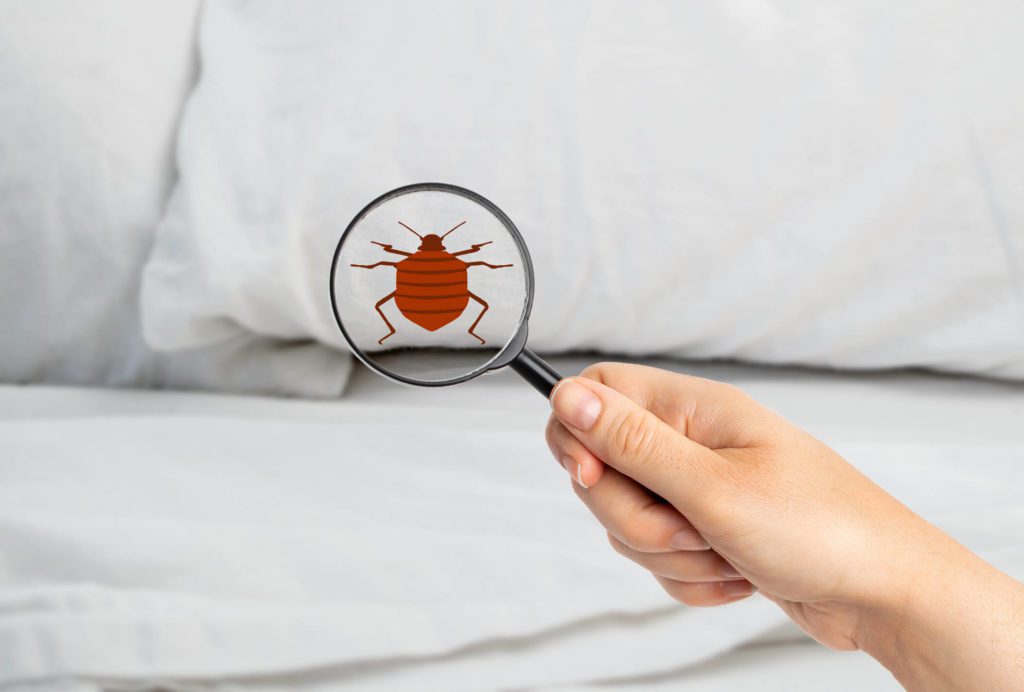Comprehensive Kings Pest Control Services Cincinnati OH
Comprehensive Kings Pest Control Services Cincinnati OH
Blog Article
Kinds of Insect Control: Which Method Is Right for Your Invasion?
When faced with a pest infestation, the selection of an appropriate technique for insect control is vital in effectively managing the circumstance. From chemical treatments to biological options, there exists a variety of techniques that can be employed to resolve various sorts of parasites. Each approach features its own set of considerations and benefits, making the decision-making procedure a nuanced one. Understanding the nuances of each technique and evaluating their compatibility with the particular parasite infestation available is necessary for attaining long-lasting success in insect management. By checking out the various kinds of pest control approaches available, individuals can make informed decisions customized to their one-of-a-kind situations, making certain an extra lasting and effective outcome in parasite elimination.
Chemical Insect Control
Chemical insect control includes making use of artificial or naturally derived chemicals to manage and eradicate pest populations successfully. This method is commonly utilized in agriculture, forestry, and household setups to deal with a variety of parasites, consisting of pests, rats, and weeds. Using chemical pesticides can give fast and targeted remedies to pest problems, making it a prominent option for several people and organizations.
Among the crucial advantages of chemical insect control is its ability to promptly remove bugs, lowering the danger of damage to crops, building, and human health. By using specific chemicals that target specific parasites, this approach can efficiently regulate infestations while lessening damage to helpful organisms and the environment when used correctly.
Nonetheless, using chemical parasite control likewise increases issues concerning prospective unfavorable results on non-target types, water sources, and human wellness. It is essential to follow security standards, use chemicals responsibly, and consider alternate parasite control approaches to reduce these risks and make sure lasting insect monitoring techniques.
Biological Insect Control
Biological parasite control, also known as biocontrol, uses living microorganisms to handle and reduce pest populations normally. This method uses the power of nature to control bugs without the need for synthetic chemicals. Biocontrol can entail the introduction of natural adversaries of the bug species, such as killers, bloodsuckers, or pathogens, to reduce parasite populaces. By utilizing the parasite's natural predators or microorganisms, organic parasite control uses a lasting and eco pleasant remedy to pest management.

Mechanical Bug Control
Using hand-operated and physical methods to handle insect populations, mechanical parasite control offers an alternate approach that does not depend on making use of living organisms or artificial chemicals. This technique includes the use of obstacles, catches, or various other gadgets to literally prevent or eliminate bugs. By blocking pest access factors or establishing up traps to catch them, mechanical insect control can successfully minimize problems without presenting chemicals right into the atmosphere.
One usual instance of mechanical parasite control is the use of mesh screens on doors and windows to stop pests from getting in structures. This straightforward yet efficient method serves as a physical obstacle, keeping bugs out while enabling appropriate ventilation. In addition, gadgets like mousetraps, fly swatters, and ultrasonic repellents drop under the mechanical pest control classification.
While mechanical insect control approaches can be labor-intensive and need normal surveillance and upkeep, they provide a environmentally pleasant and lasting service for taking care of insect problems. By integrating different mechanical techniques, residential or commercial property proprietors can produce an extensive pest control strategy that minimizes reliance on chemical pesticides.
Physical Bug Control

Some common physical pest control methods include using obstacles such as displays or webs to stop pest access, catches to catch and remove bugs, and hand-picking to literally eliminate bugs from plants or frameworks. Furthermore, strategies like warmth treatments can be used to control pests like bed insects by raising the temperature to levels that are lethal to the bugs.
Physical pest control is especially beneficial in integrated bug monitoring (IPM) strategies, where several parasite control techniques are integrated for efficient pest monitoring while reducing the use of chemicals. By using physical bug control methods, individuals can effectively attend to bug invasions with marginal ecological impact.
Integrated Parasite Monitoring
When implementing physical bug control methods as component of insect administration methods, Integrated Pest Management (IPM) arises as a thorough technique that leverages various methods to efficiently regulate pest populations. IPM concentrates on long-lasting avoidance of pests through a mix of organic, social, physical, and chemical devices tailored to particular insect issues. By incorporating numerous control strategies, IPM intends to decrease the dangers related to bugs while also decreasing dependence on chemical remedies.
One trick aspect of IPM is the focus on monitoring and evaluating pest populations to figure out one of the most proper control approaches. This aggressive approach permits very early treatment and targeted approaches, resulting in extra reliable bug monitoring. Additionally, IPM promotes eco-friendly methods by focusing on non-chemical control techniques and only making use of chemicals as a last resort.
Final Thought

By making use of the pest's natural predators or pathogens, biological pest control offers a sustainable and ecologically pleasant option to pest management. - Kings pest control Cincinnati
Utilizing physical and hands-on techniques to handle pest populations, mechanical insect control provides a different method that does not count on the usage of living organisms or synthetic chemicals.An effective technique to taking care of bug populations without relying on chemical or biological methods involves the use of physical insect control methods.When applying physical bug control techniques as component of insect monitoring strategies, Integrated Insect Management (IPM) emerges as a thorough strategy that leverages different strategies to successfully manage pest populations. Chemical bug control includes the usage of pesticides, organic pest control utilizes natural predators, mechanical insect control includes physical barriers, physical parasite control includes capturing or getting rid of bugs, and integrated insect monitoring integrates several techniques for a holistic approach to pest control.
Report this page